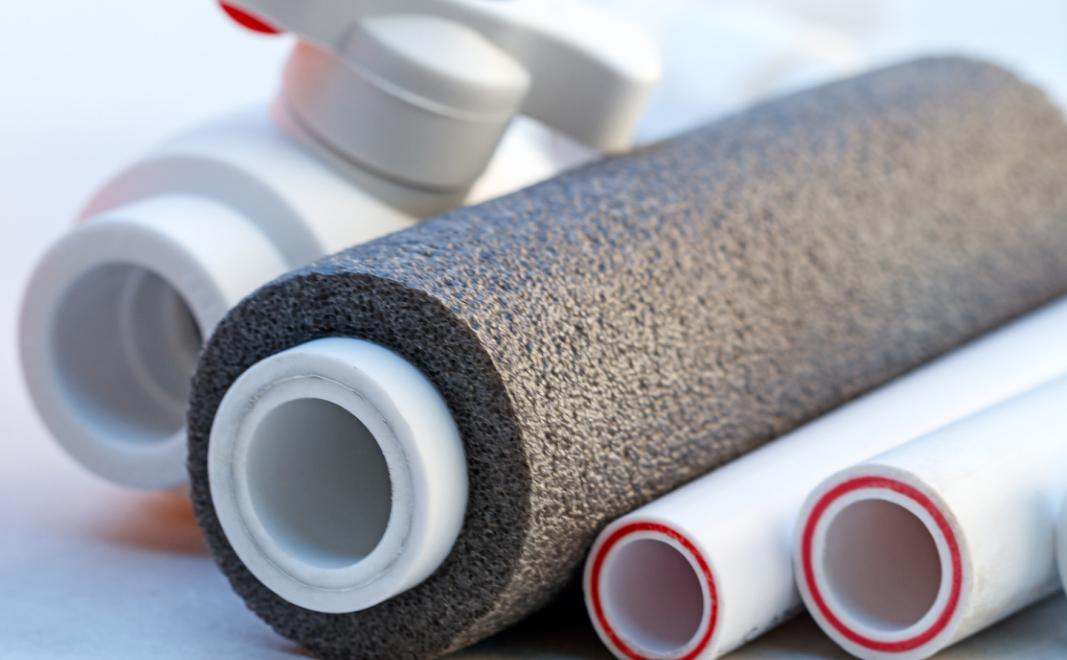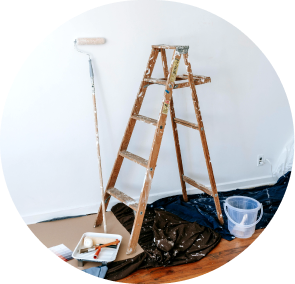Selecting the Ideal Insulation for Pipes to Avoid Freezing
Kozel LLC can install and Insulate your pipes from freezing with indoor and outdoor pipe wrap insulation. Use these to prevent the freezing of your plumbing:
- Rigid foam padding for pipes. Rigid foam regulates temperature even in thin layers, albeit it might not offer as much insulation as other materials. Additionally, it is impervious to moisture and rust;
- Flexible elastomeric foams or rubber pipe insulation. Elastomeric foam lasts longer and is less prone to breaking and cracking when it is flexible. It offers superior soundproofing, mildew prevention, and heat insulation;
- Polythene. The most common type of flexible plastic foam used for insulation on home pipes is polyethylene. It provides condensation management and freeze prevention, and it’s lightweight and strong.
Recall that pipe insulation only prevents freezing. To fully avoid it, take further precautions like heating the part of your house where exposed pipes are located or just leaving the water running at a trickle.
Insulating Heating Pipes to Increase Efficiency
Heat loss may be avoided through the insulation of hot pipes for maximum efficiency. Keeps heat in your system with insulation for steam radiator lines and standard hot water lines. Typical heat shields consist of:
- Insulation Fiberglass or Glass Wool for Piping. Materials that provide lightweight protection from ultra-high heat and mildew are fibrous glass and rock wool;
- Insulation is made of mineral wool. Mineral wool is best used on highly hot pipes because of its reputation for withstanding extreme temperature conditions;
- Polythene. The most often used cold insulator shields hot pipes from heat loss as well. Use this strong, water-resistant material that is lightweight to insulate your home’s plumbing.
The quality pipe insulation that the professionals at Kozel LLC offer will help make your space more efficient, and it will also be able to keep the heat in. In addition, by insulating your piping, you will be able to keep yourself and your family safe from potential mishaps.
Extra Motives for Insulating Your Pipes
Although many people insulate water lines primarily for temperature reasons, insulation has additional advantages. Protective insulation is another function of insulating hot water pipelines. A scalding hot pipe can burn you if you happen to bump into one by mistake.
Moreover, loud plumbing fixtures are a problem, particularly in older homes. Acoustic dampening, which is a feature of some insulating materials, can aid in lowering noise levels in your house.
Reduce the Cost of Your Next Energy Expense
The use of pipe insulation greatly lowers energy expenses. First and foremost, it keeps heat from escaping, which is crucial for heating systems. Insulation keeps heat in the pipes, requiring less energy to keep the temperature at the desired level.
Second, pipe insulation in cooling systems helps prevent the chilled liquid from heating up, which lessens the strain on the cooling apparatus.
Why Select Kozel LLC Workers?
To determine the insulation thickness, heat gain or loss, surface temperature, and other environmental elements, our contractors first look at the working circumstances. This enables our installers to decide which solution best suits your unique needs. Our design program and contractor will display the fuel cost savings return on investment, the efficiency ratio of insulated versus uninsulated heat loss, installation and maintenance piping costs, and other expenses.
Subsequently, our skilled Kozel LLC pipe insulation company near me teams will execute a polished installation with the least amount of disturbance to your establishment. The outcome is an energy- and money-efficient insulating system built for dependable, long-term operation.
FAQ
Indeed! Insulation helps lessen these problems, but it cannot stop heat loss or ensure that your pipes won’t freeze.
When the temperature drops below 32°F, water in exterior pipes freezes. Inside an unheated or underheated building, pipes can start to freeze at 20°F, while outside overnight freezing of pipes.
The color of often colored light gray or white, asbestos insulation, and it frequently resembles a layer of plaster, corrugated paper, or paste that resembles cement.

